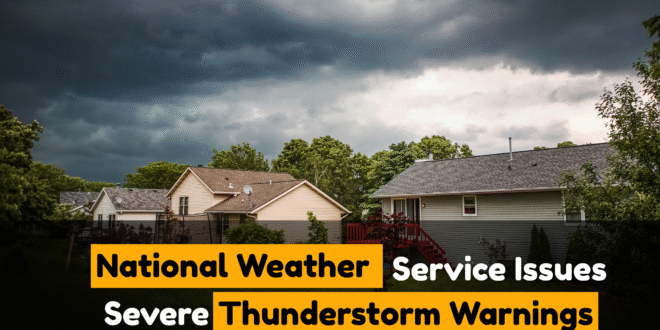National Weather Service Issues Severe Thunderstorm Warnings: On the evening of July 16, a lightning strike tragically struck the Black Knight Bowbenders archery range in Jackson Township, New Jersey. The National Weather Service (NWS) had already issued a severe thunderstorm warning for the area.
The storm caused the death of a 61-year-old man and injured 13 others, including several children and teenagers.
Emergency responders provided CPR at the scene and transported the victims to nearby hospitals.
This tragic incident highlighted the real-time danger posed by thunderstorms and the importance of taking warnings seriously.
Midwest and Rockies Face Threats from Large Hail and Damaging Winds
On the same day, the Storm Prediction Center placed several regions, including Chicago, Denver, and surrounding Midwest and Rocky Mountain areas, under a Level 2 (Slight Risk) category for severe weather.
Residents were warned of large hail, powerful wind gusts, and the potential for isolated tornadoes.
Warm, moist air combined with daytime heating created volatile conditions, leading to fast-developing storm systems. While the storms posed threats of damage.
They also helped clear wildfire smoke and brought temporary relief to drought-stricken areas.
Flash Flood Emergencies in Texas Hill Country
In Texas Hill Country, the NWS issued multiple flash flood warnings following several rounds of thunderstorms.
Rivers such as the Guadalupe, Frio, Nueces, and San Saba began to overflow as one to two inches of rainfall saturated the ground.
Over 15 roads were shut down, and emergency crews delivered supplies to stranded rural communities via helicopters.
While these weren’t all categorized under “severe thunderstorm warnings,” they were closely tied to thunderstorm activity and their secondary effects, such as flash floods, remained equally dangerous.
Understanding the Severity of Thunderstorm Warnings
A severe thunderstorm warning is issued when radar or trained spotters detect storms capable of producing large hail (1 inch or more), wind speeds over 58 mph, or frequent lightning.
These warnings are typically short-term and region-specific.
It’s essential to understand that a “watch” means be prepared, while a “warning” means take action immediately. Warnings are based on real-time data and can prevent injury or loss of life if taken seriously.
Safety Measures During Severe Weather Alerts
-
Take shelter immediately when a warning is issued.
-
Avoid open fields, tall trees, and bodies of water during lightning storms.
-
Never attempt to drive through flooded roads.
-
Stay updated through official weather apps and NOAA alerts.
Conclusion
The past 24 hours have demonstrated the unpredictable and deadly nature of severe weather across the United States. From a fatal lightning strike in New Jersey to flash floods in Texas and large hail threats in the Midwest, these events serve as a stark reminder of the importance of heeding National Weather Service warnings. Storms can escalate quickly, and taking immediate action can mean the difference between safety and tragedy. Always stay informed, prepared, and responsive to weather alerts issued by trusted authorities.




